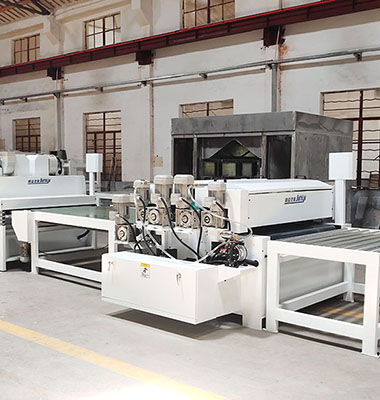Paper packaging is affected by the external environment, the appearance of the ink layer is easy to fall, and the tarnished packaging is not liked by people, generally choose the method of lamination to solve the above problems. However, the film is difficult to natural degradation, waste packaging materials recovery, paper and plastic is difficult to leave, do not leave high cost. In such a setting, environmental varnish came into being. The following polish machine manufacturers for you to introduce the environmental protection on Polish.
What is environmental polish
Polish refers to the coating on the surface of printed matter, to add gloss, wear resistance, water resistance of a liquid. Glazing oil includes water-based glazing oil, oil-based glazing oil, UV glazing oil, alcohol soluble glazing oil, etc.
In recent years, with the increasing awareness of environmental protection, water-based glazing oil and UV glazing oil as the representative of environmental protection glazing oil is more and more professional attention.
Classification of environmental protection glazing oil and its environmental performance
Environment friendly glazing oil is mainly divided into the following two kinds:
(1) Water based glazing oil: mainly composed of main agent, solvent and auxiliary agent, it is colorless, tasteless, transparent, non-toxic, no organic evaporation, low cost, wide history and other characteristics, which can not be compared with other solvent based glazing oil. If other main agents and additives are added, it can also have good gloss, wear resistance and chemical resistance, economic and health, especially suitable for packaging and printing.
The solvent of water-based glazing oil is mainly water, the evaporation is almost zero, and the leveling function is very good. In the operation, it eliminates the harm to human body and the pollution to the environment, which is paid attention to by food and tobacco printing enterprises.
However, its shortcomings lie in the slow drying speed, simple product size instability and other process failures. Therefore, ethanol should be added properly in the application to improve the drying function of water-based solvent and the processing suitability of water-based varnish.
As the main raw materials of water-based glazing oil are increasingly localized, its production cost will continue to decline and its market competitiveness will continue to increase. In the future, water-based varnish, a green printing material, will become the mainstream product in the appearance finishing market.
(2) UV varnish: UV (ultraviolet) irradiation is used to cure varnish, which has the characteristics of fast curing and low temperature curing ink. UV varnish is almost solvent-free, very little organic evaporation emissions, thus reducing air pollution, and curing does not need heat energy, the curing energy consumption is relatively small. In addition, UV varnish has strong affinity for ink and firm adhesion; UV varnish has high effective components, less evaporation and relatively less consumption; the appearance of UV cured printing products is more wear-resistant, drug-resistant and chemical resistant, with good stability, and can be wiped with water and ethanol; UV products are not easy to adhere, and can be stacked after curing, which is conducive to the post process processing.
When using UV varnish, you should pay attention to the following typical problems: UV varnish is not suitable for operation on permeable paper. As a result of UV varnish in the low molecular data simple penetration into the paper, causing the paper darkening and even soaking. Now, most of the UV varnish is used in aluminum coated printing paper.
